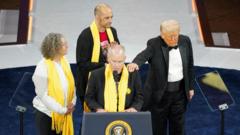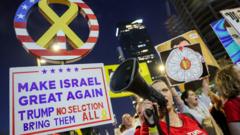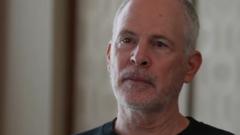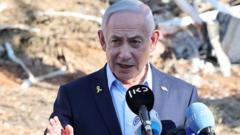Despite possible optimism, both nations face internal opposition that could derail future agreements.
**U.S. and Iran Nuclear Talks: Initial Progress Amid Challenges**

**U.S. and Iran Nuclear Talks: Initial Progress Amid Challenges**
The first meeting between the U.S. and Iran raises hopes for nuclear negotiations, but hard-liners pose significant hurdles ahead.
April 13, 2025, marked a pivotal moment as the United States and Iran engaged in their first discussions regarding Iran's contentious nuclear program. The meeting demonstrated a mutual commitment to avert further military conflict in the region, promising a profound emphasis on dialogue moving forward. These discussions, set to continue next Saturday, face numerous challenges, particularly from hard-line factions in both countries and external influence from Israel.
The urgency of these negotiations contrasts sharply with the deliberations that led to the 2015 nuclear deal, which were driven primarily by Iran's need to alleviate crippling sanctions. Today, Iran is still grappling with pressures from Israel and reduced capabilities among its regional allies. The Iranian leadership recognizes that President Trump is serious about the potential for intensified military action unless a clear path towards economic relief and security is forged.
In a notable shift, the current negotiations in Oman are leveraging a more direct bilateral approach, differing from the multi-nation framework of the past. While historically deemed a foe by Iran, the U.S. plays a crucial role in mediating relations and putting pressure on Israel to comply with any foreseeable agreements. Though Iran has insisted on indirect talks through Oman, some nuances emerged as Trump's envoy, Steve Witkoff, ultimately engaged in direct dialogue with Iran's foreign minister, Abbas Araghchi.
Analysts view the initial conversation as a promising start, with hopes hinging on continued cooperation where both nations can find common priorities despite their antagonistic histories. Ali Vaez of the International Crisis Group expressed cautious optimism, noting that both parties agreed not only to another meeting but also aimed for a substantial resolution.
The urgency of these negotiations contrasts sharply with the deliberations that led to the 2015 nuclear deal, which were driven primarily by Iran's need to alleviate crippling sanctions. Today, Iran is still grappling with pressures from Israel and reduced capabilities among its regional allies. The Iranian leadership recognizes that President Trump is serious about the potential for intensified military action unless a clear path towards economic relief and security is forged.
In a notable shift, the current negotiations in Oman are leveraging a more direct bilateral approach, differing from the multi-nation framework of the past. While historically deemed a foe by Iran, the U.S. plays a crucial role in mediating relations and putting pressure on Israel to comply with any foreseeable agreements. Though Iran has insisted on indirect talks through Oman, some nuances emerged as Trump's envoy, Steve Witkoff, ultimately engaged in direct dialogue with Iran's foreign minister, Abbas Araghchi.
Analysts view the initial conversation as a promising start, with hopes hinging on continued cooperation where both nations can find common priorities despite their antagonistic histories. Ali Vaez of the International Crisis Group expressed cautious optimism, noting that both parties agreed not only to another meeting but also aimed for a substantial resolution.





















